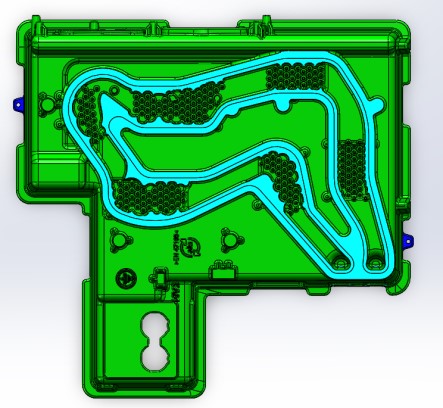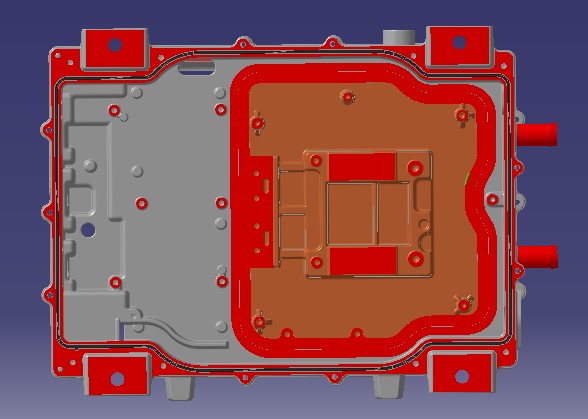Automotive lightweight Material
In addition to the problems of spring back during forming, high-strength steel has the characteristics of high strength, light weight, and low cost. These help to reduce the weight of automobiles and improve safety. High-strength steel is mainly used in front bumper beams, A, B, and C-pillar reinforcements, sill beams, door bumper beams, and roof crossbeams, and gradually expands due to the common ratio. The application of high-strength steel in some European and American bodies has exceeded 60%, such as Audi A3, BMW 3 Series, Cadillac ATS, Ford Mondeo, etc.; Japanese models also account for more than 50% of high-strength steel, such as Infiniti Q50, Honda Civic and so on.

Figure 1 the use of high-strength steel in the body frame
Aluminum and aluminum alloys are currently more mature lightweight metal materials. Their advantages are low density, high lightness, high elasticity, high impact resistance, and easy coloring. In particular, deformed aluminum alloys have developed rapidly in the application of body-level structural parts, such as increasingly widely used aluminum alloy trunk lids, engine compartment covers, back doors, and bumper beams. With the development and application of new materials such as solidified aluminum alloys, powder metallurgy aluminum alloys, superplastic aluminum alloys, aluminum matrix composites and foamed aluminum materials, the future application of aluminum alloys in automobiles will be further expanded, and castings, profiles, plates will be presented Simultaneously, aluminum is expected to become the second largest automotive material after steel in the future. The appearance of friction stir welding technology has solved the welding problem of aluminum alloy. In current automobile manufacturing, aluminum alloys have been widely used in automobile wheels, power systems and suspension systems. In recent years, Audi, Jaguar Land Rover, Ford, etc. have all used aluminum body structures.

Figure 2 Audi A8 all-aluminum body
Magnesium and magnesium alloys have the advantages of low density, light weight, and specific strength superior to aluminum alloys and steel. However, due to their poor high-temperature fatigue performance and weak creep resistance, their application in automobiles is limited, and they are currently mainly used in Shell and bracket parts, such as instrument panel, gearbox body, steering bracket, brake bracket, etc. There is no mass production application on body-in-white structural parts. At present, only a certain Chrysler model has been tried. Due to the corrosion resistance and molding limitations of magnesium alloys, it has not yet been widely used.


a) Engine cover b) Seat frame
Figure 3 Application examples of magnesium alloys on the body
The composite material has the advantages of low density, high specific strength, high specific modulus, and strong designability, and is easy to realize integrated and modular design; good corrosion resistance, good durability, and sound insulation and noise reduction. At present, the composite material of the car body structural parts is the resin-based carbon fiber reinforced composite material, which is mainly used in the structural parts of the engine compartment cover, fender, roof, trunk, door panel, chassis light. Such as BMW I3 electric car composite material use structure diagram.


Figure 4 BMW i3 electric car





